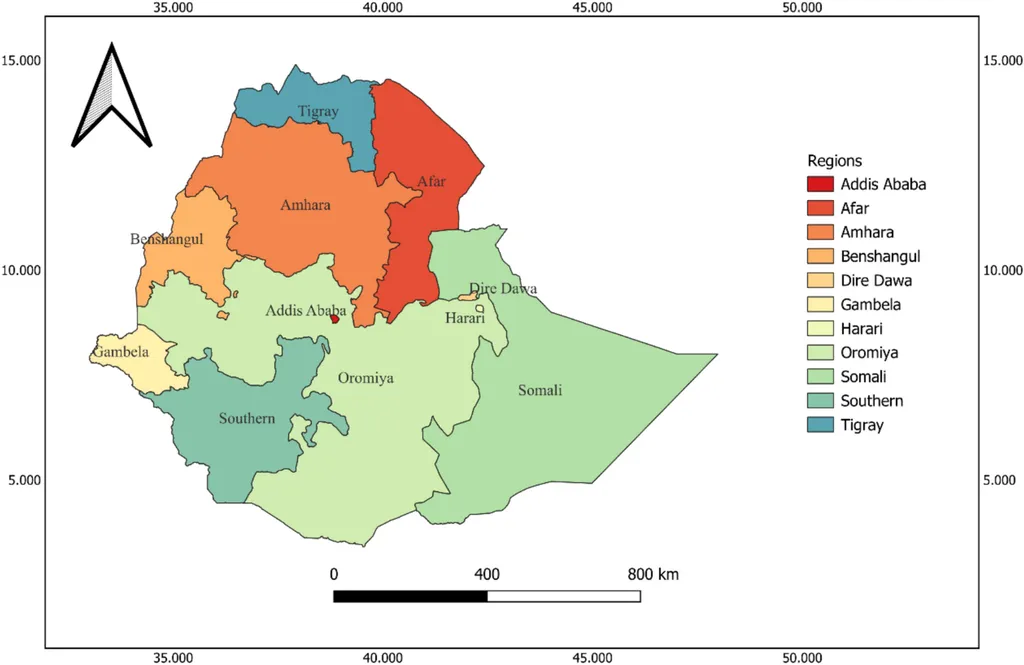In the heart of Ethiopia, where agriculture is the backbone of the economy, a silent workforce is at play—bees and other insect pollinators. A recent study published in *Scientific Reports* (translated to English as “Scientific Reports”) has shed light on the immense economic and nutritional value these tiny workers bring to the table. The research, led by Haftom Gebremedhn from the Mekelle Bee Research and Training Center at the Tigray Agricultural Research Institute, reveals that the economic value of insect pollination in Ethiopia has surged more than fivefold from 1993 to 2023, reaching approximately US$543.8 million.
The study employed the dependency ratio method, utilizing publicly available data on agricultural production, commodity prices, and nutritional composition of crops. The findings are striking: the cultivated area of pollinator-dependent (PD) crops has tripled, and their production volume has doubled over the past three decades. In 2023 alone, PD crops contributed 20.9% of the total economic value of crop production, generating around US$2.3 billion.
But the benefits extend beyond economics. PD crops are nutritional powerhouses, boasting higher densities of calcium, iron, zinc, protein, fat, vitamin E, and vitamin B12 compared to pollinator-independent (PI) crops. “Insect pollination is not just about increasing crop yields; it’s about enhancing the nutritional value of our food,” Gebremedhn emphasizes. The study highlights that 71% of plant-based vitamin E, 12.5% of dietary fat, and 6.2% of calcium in Ethiopia’s crops are directly attributable to insect pollination.
The research also identifies regional vulnerabilities to pollinator loss, with the Southern, Benshangul, Oromiya, Amhara, and Tigray regions showing the highest economic risks. Oil crops, coffee, pulses, and fruits are the most vulnerable to pollinator decline, with oil crops topping the list at 26.3%.
So, what does this mean for the future of agriculture and nutrition in Ethiopia? The study underscores the urgent need to protect pollinators and promote sustainable agricultural practices. “Future policies should incorporate pollinator protection into agricultural and nutrition strategies,” Gebremedhn advises. “Conservation efforts must be strategic and well-targeted, considering the specific vulnerabilities of different crops and regions.”
This research not only highlights the critical role of insect pollinators in Ethiopia’s agricultural sector but also serves as a wake-up call for global policymakers. As the world grapples with food security and nutritional challenges, understanding and valuing the services provided by pollinators could be a game-changer. The study’s findings could shape future developments in agricultural policies, conservation strategies, and even international trade, as the world increasingly recognizes the interconnectedness of ecosystems and economies.
In the words of Gebremedhn, “Protecting pollinators is not just an environmental issue; it’s an economic and nutritional imperative.” As we move forward, the hope is that this research will inspire action and innovation, ensuring that the silent workforce of pollinators continues to thrive and support the communities that depend on them.

